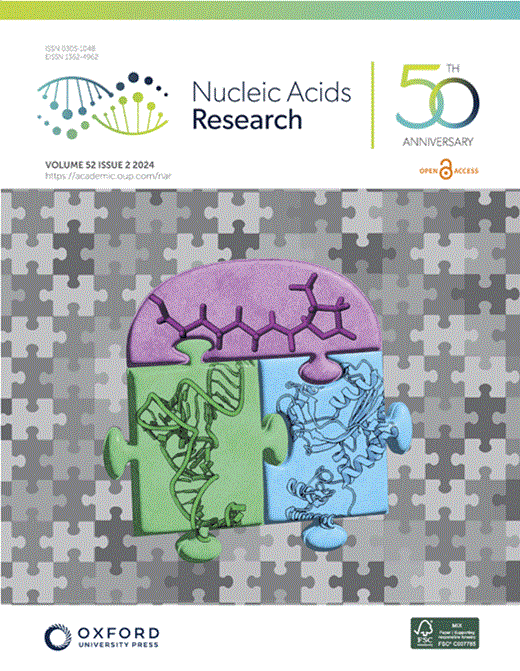pC-SAC: A method for high-resolution 3D genome reconstruction from low-resolution Hi-C data
IF 16.6
2区 生物学
Q1 BIOCHEMISTRY & MOLECULAR BIOLOGY
引用次数: 0
Abstract
The three-dimensional (3D) organization of the genome is crucial for gene regulation, with disruptions linked to various diseases. High-throughput Chromosome Conformation Capture (Hi-C) and related technologies have advanced our understanding of 3D genome organization by mapping interactions between distal genomic regions. However, capturing enhancer–promoter interactions at high resolution remains challenging due to the high sequencing depth required. We introduce pC-SAC (probabilistically Constrained Self-Avoiding Chromatin), a novel computational method for producing accurate high-resolution Hi-C matrices from low-resolution data. pC-SAC uses adaptive importance sampling with sequential Monte Carlo to generate ensembles of 3D chromatin chains that satisfy physical constraints derived from low-resolution Hi-C data. Our method achieves over 95% accuracy in reconstructing high-resolution chromatin maps and identifies novel interactions enriched with candidate cis-regulatory elements (cCREs) and expression quantitative trait loci (eQTLs). Benchmarking against state-of-the-art deep learning models demonstrates pC-SAC’s performance in both short- and long-range interaction reconstruction. pC-SAC offers a cost-effective solution for enhancing the resolution of Hi-C data, thus enabling deeper insights into 3D genome organization and its role in gene regulation and disease. Our tool can be found at https://github.com/G2Lab/pCSAC.求助全文
约1分钟内获得全文
求助全文
来源期刊

Nucleic Acids Research
生物-生化与分子生物学
CiteScore
27.10
自引率
4.70%
发文量
1057
审稿时长
2 months
期刊介绍:
Nucleic Acids Research (NAR) is a scientific journal that publishes research on various aspects of nucleic acids and proteins involved in nucleic acid metabolism and interactions. It covers areas such as chemistry and synthetic biology, computational biology, gene regulation, chromatin and epigenetics, genome integrity, repair and replication, genomics, molecular biology, nucleic acid enzymes, RNA, and structural biology. The journal also includes a Survey and Summary section for brief reviews. Additionally, each year, the first issue is dedicated to biological databases, and an issue in July focuses on web-based software resources for the biological community. Nucleic Acids Research is indexed by several services including Abstracts on Hygiene and Communicable Diseases, Animal Breeding Abstracts, Agricultural Engineering Abstracts, Agbiotech News and Information, BIOSIS Previews, CAB Abstracts, and EMBASE.
 求助内容:
求助内容: 应助结果提醒方式:
应助结果提醒方式:


